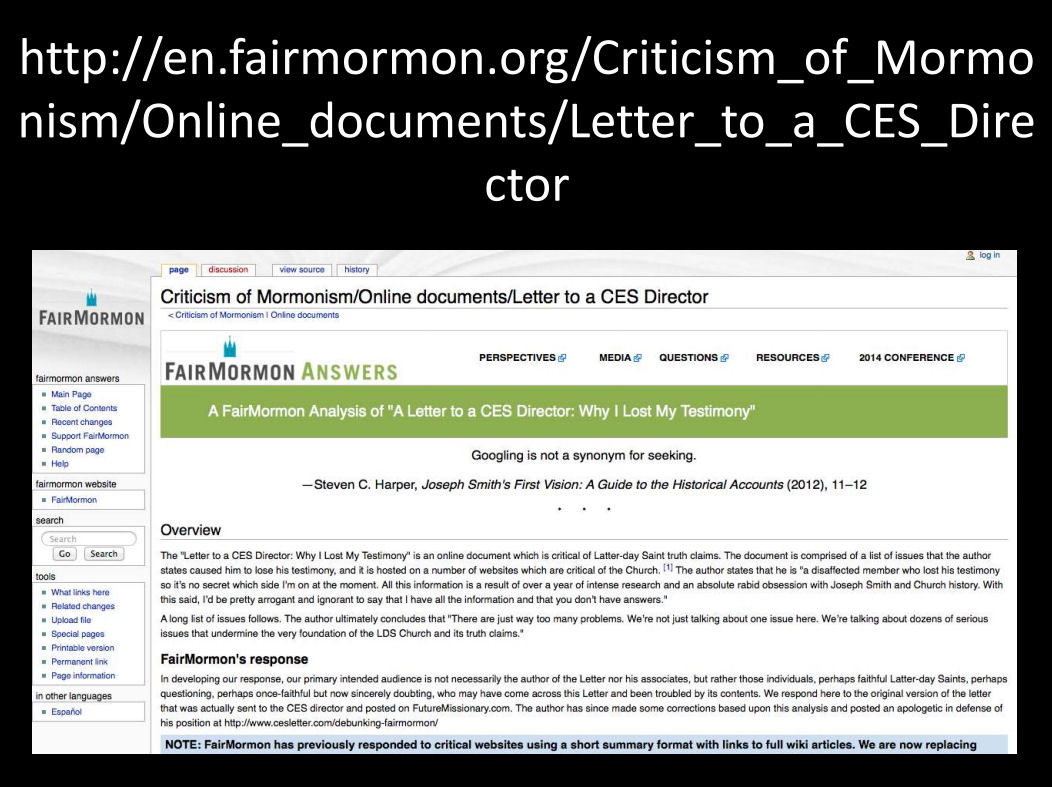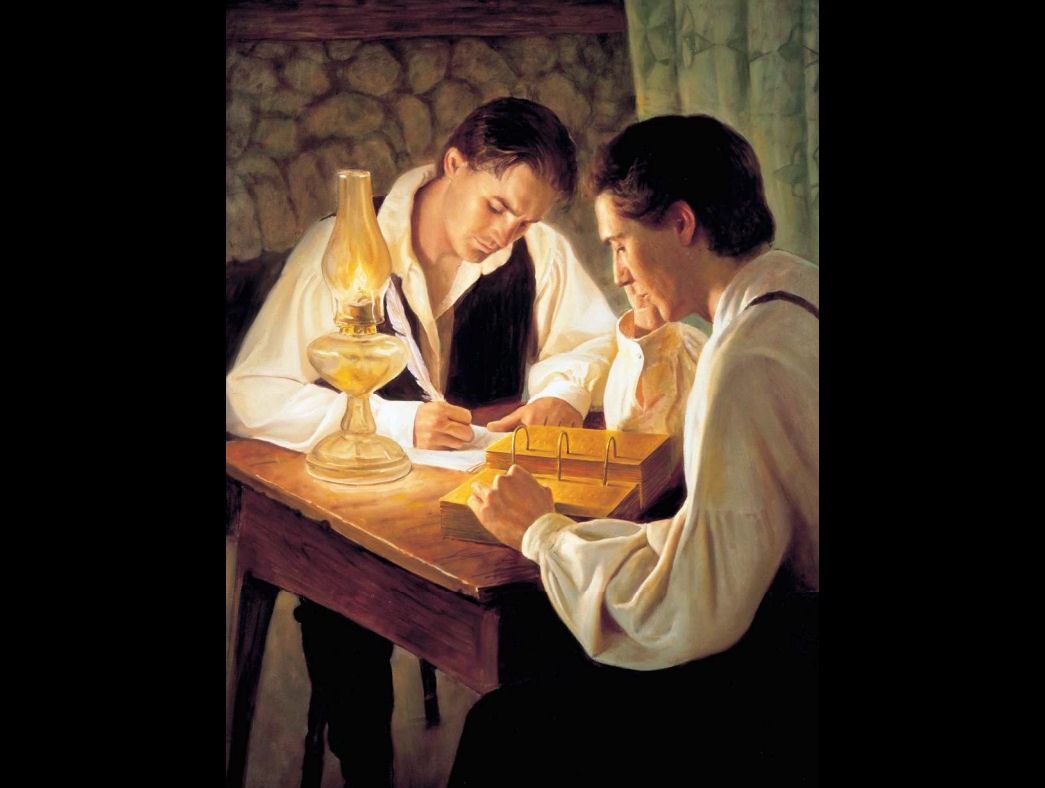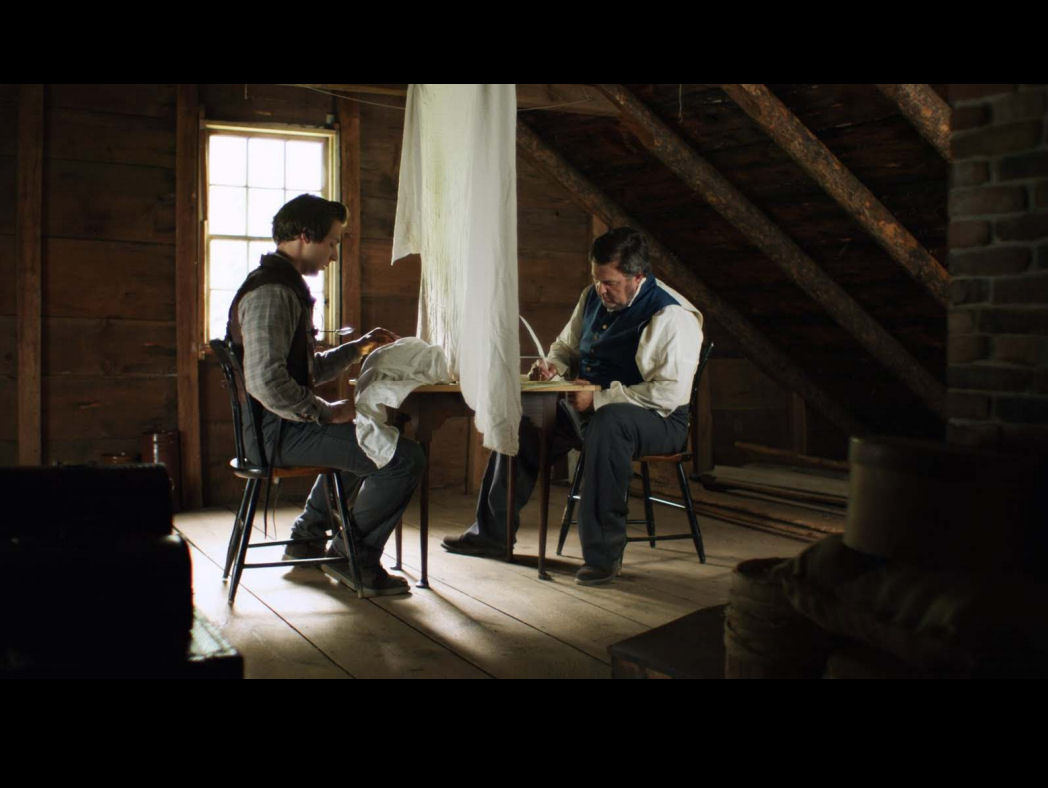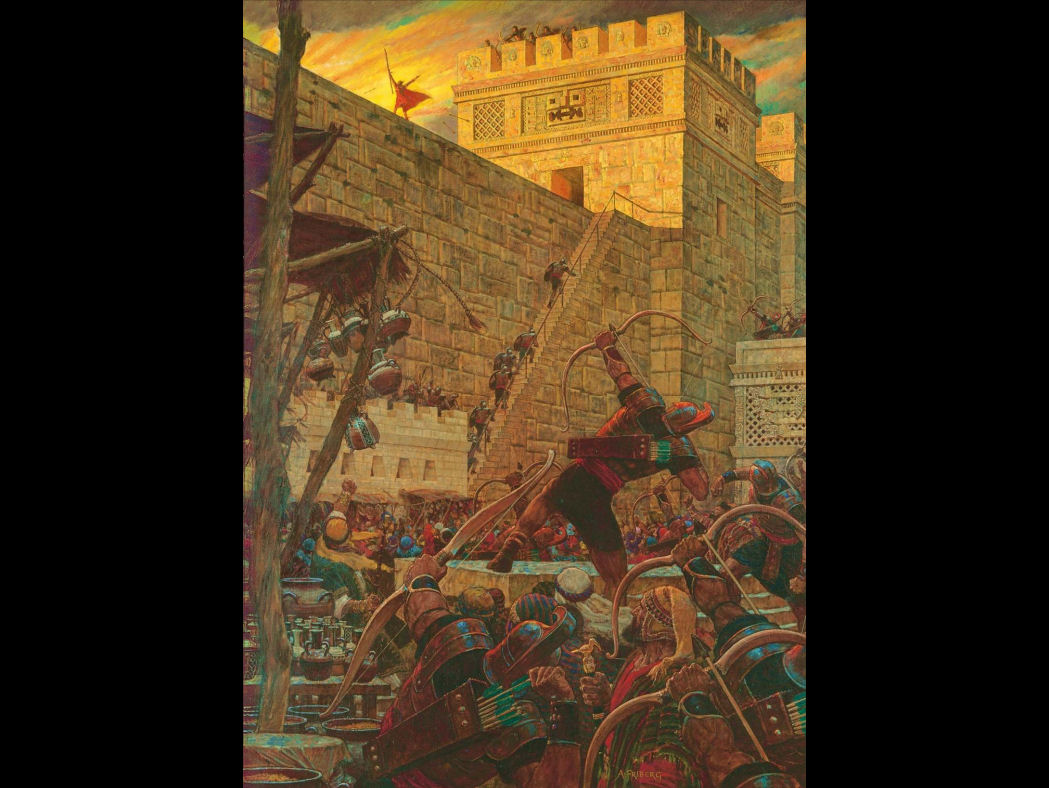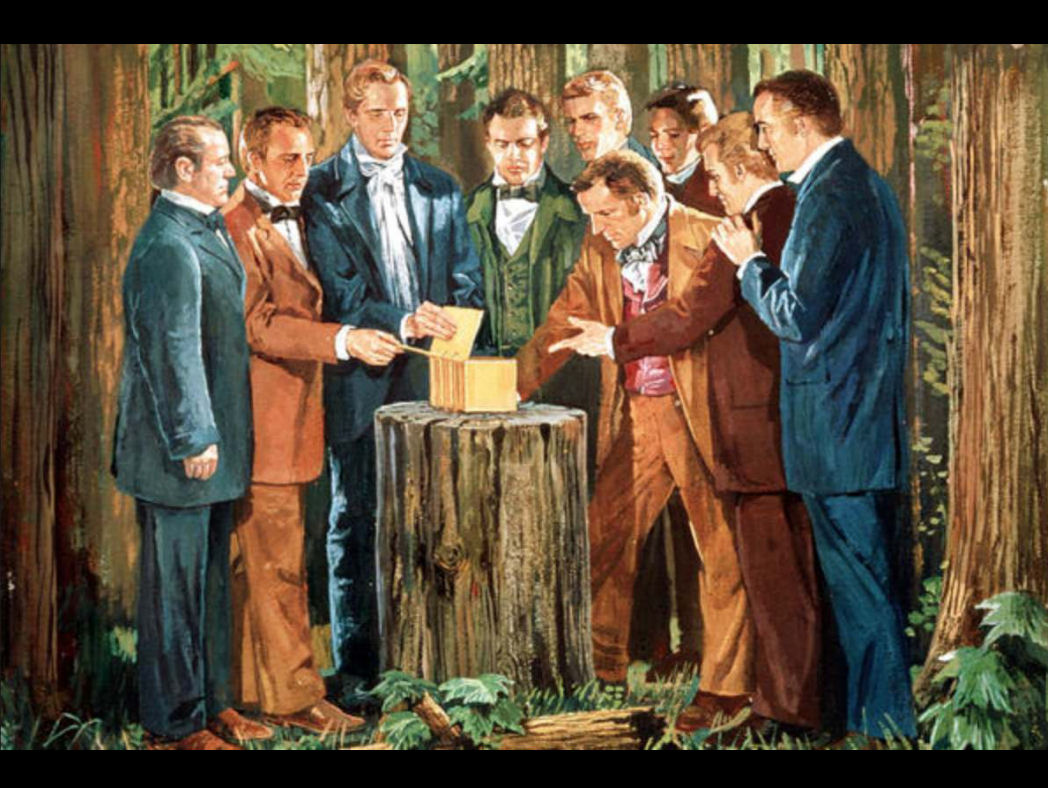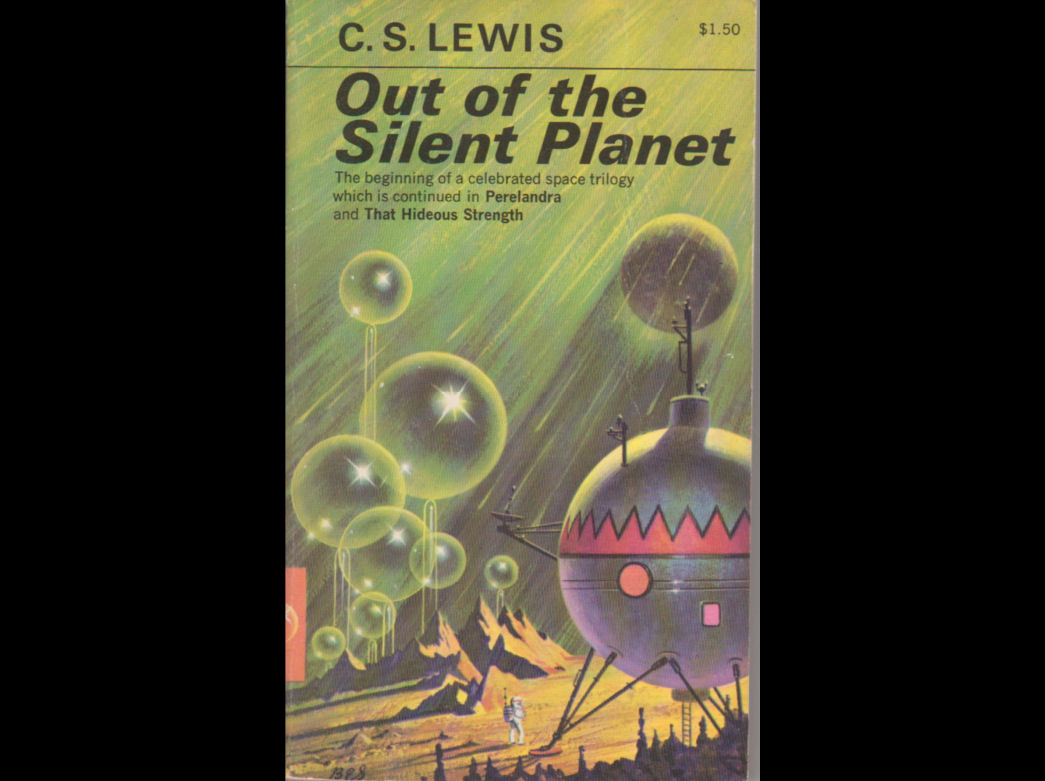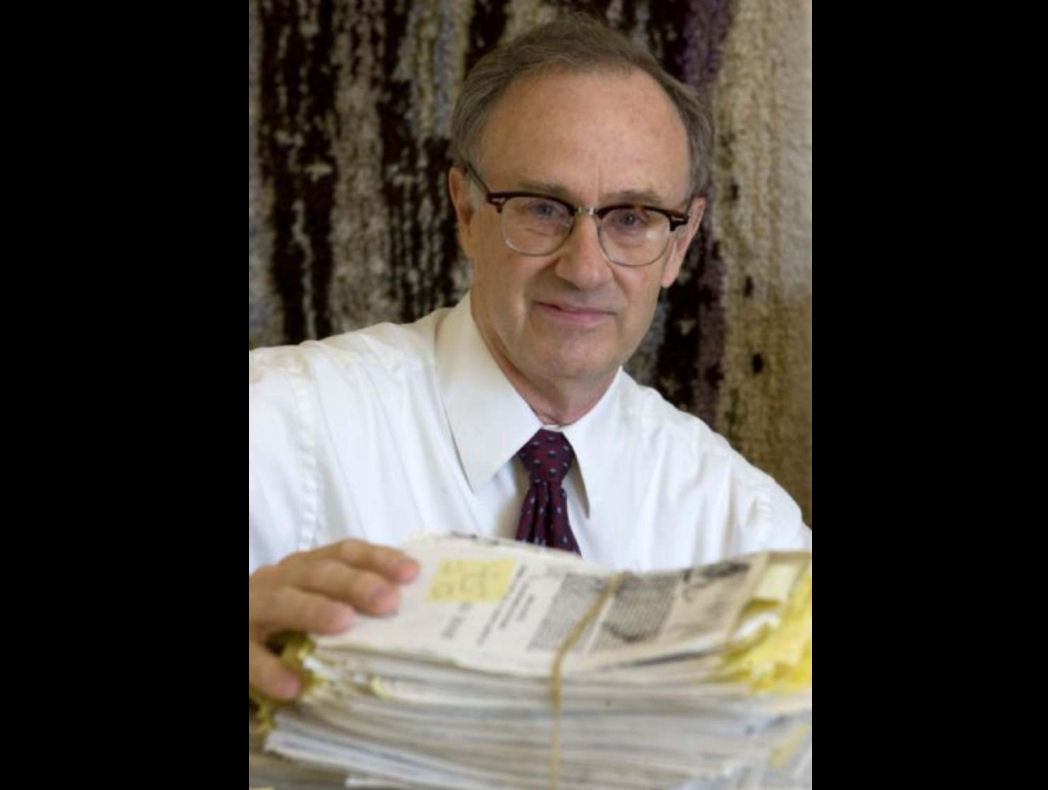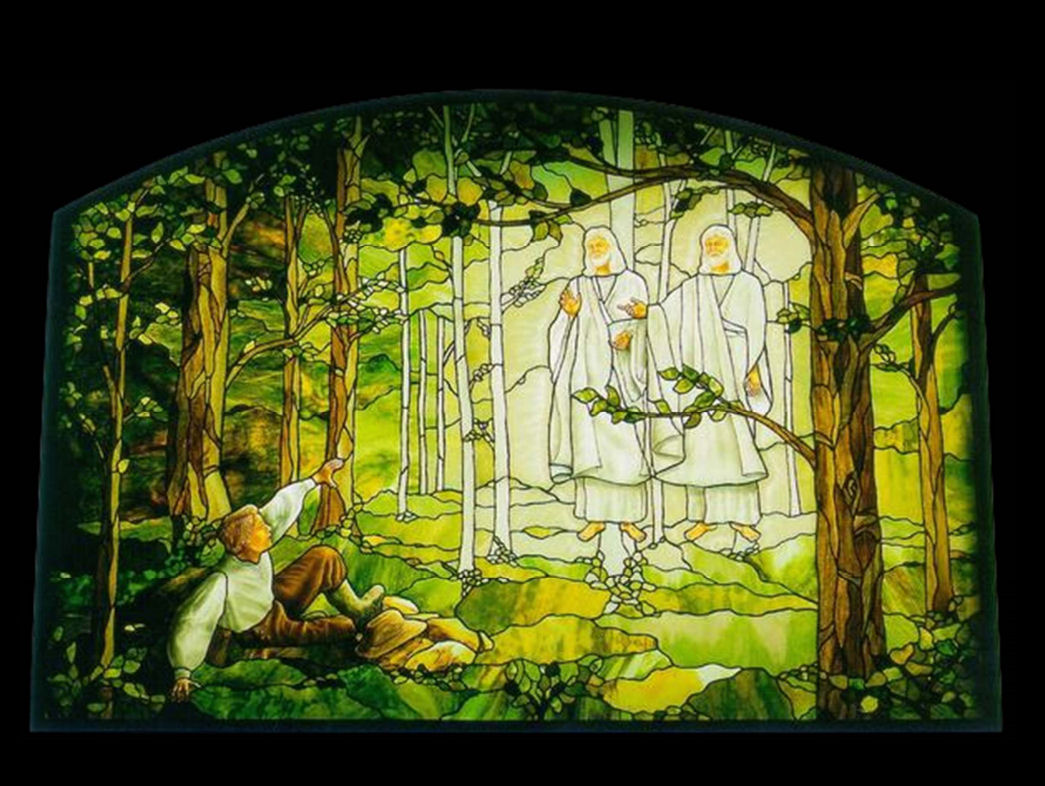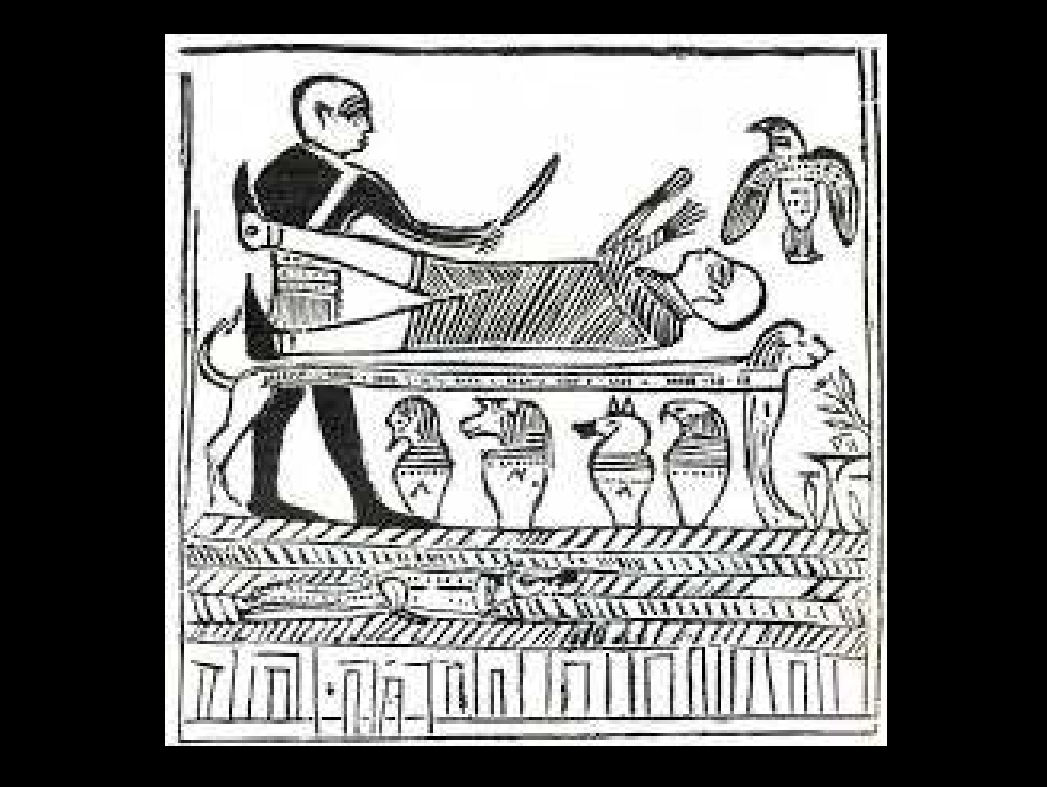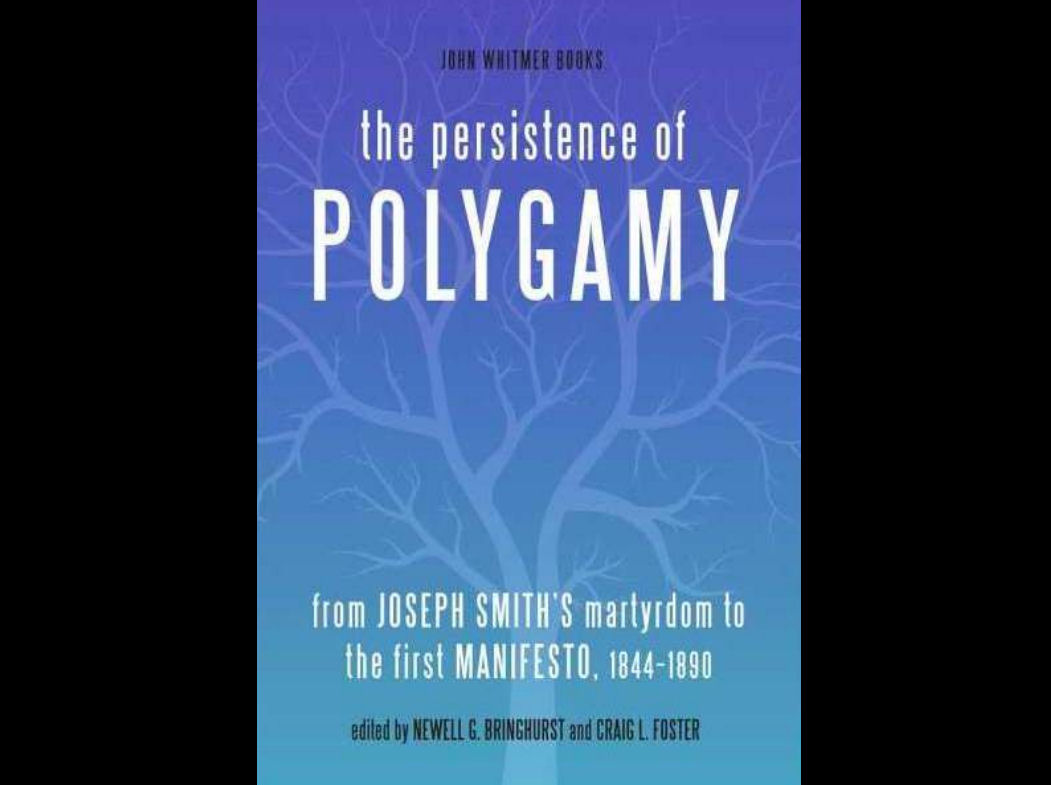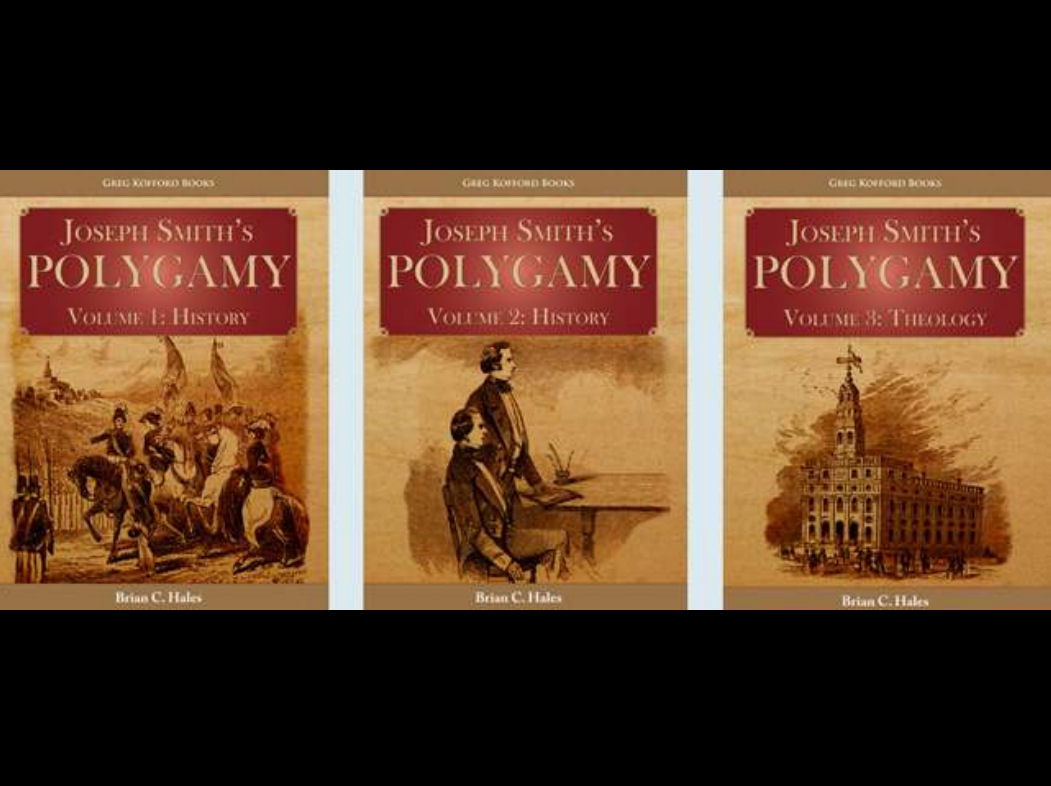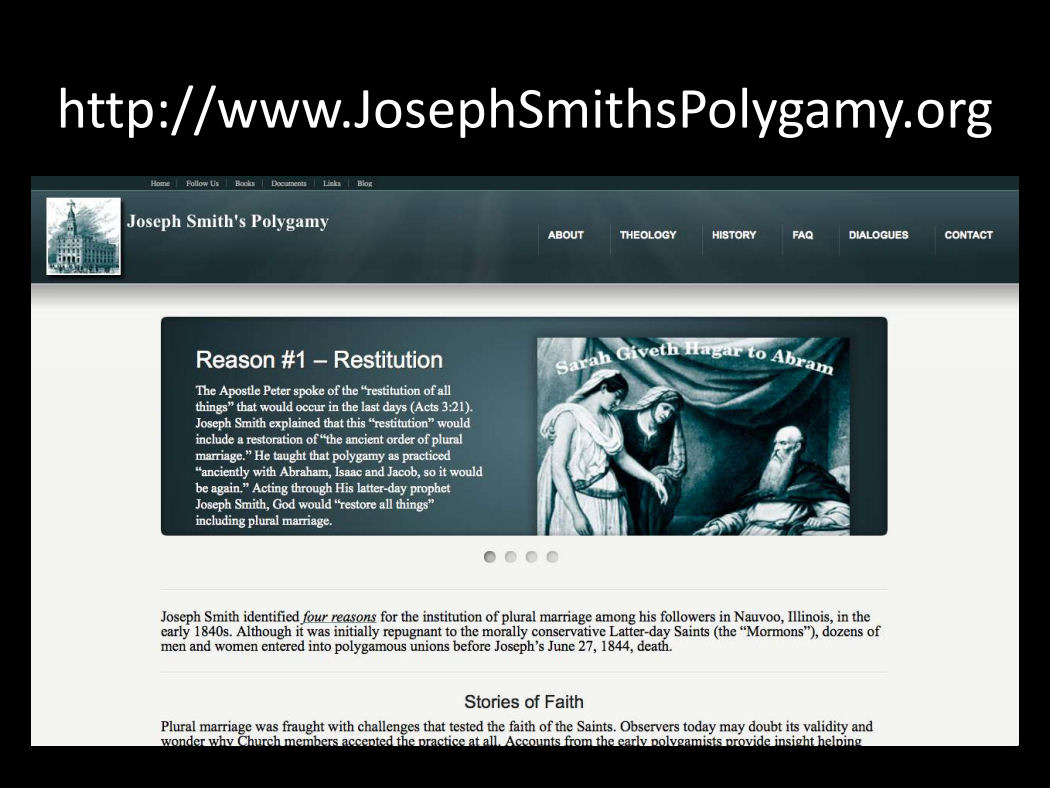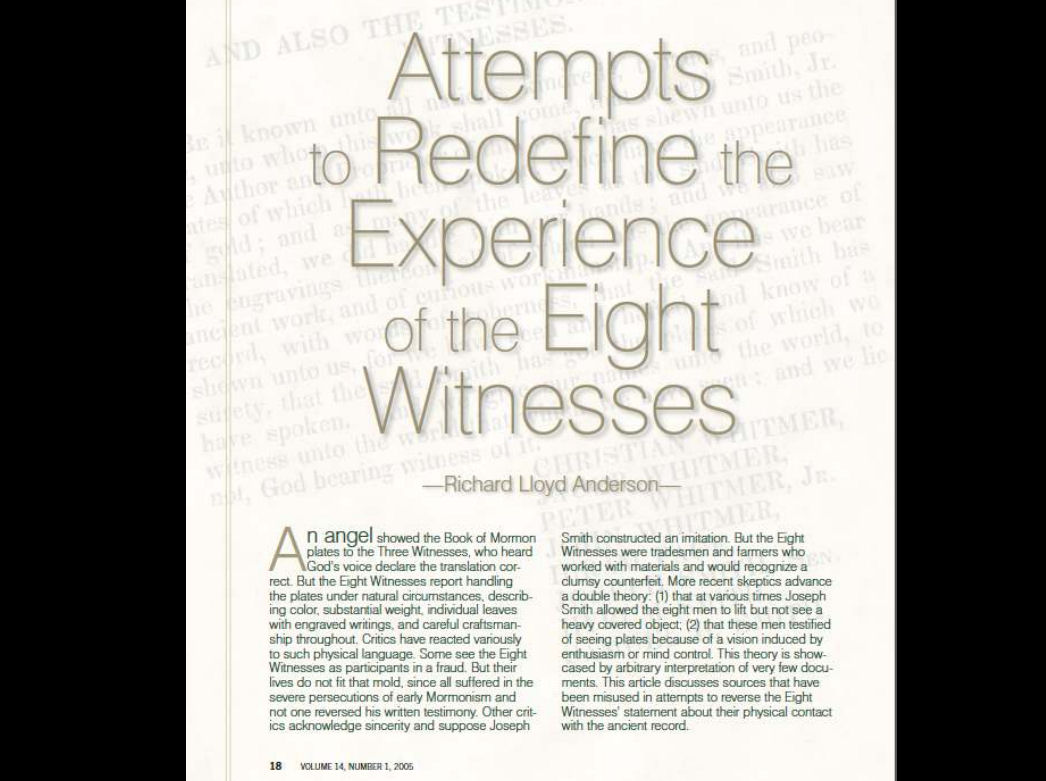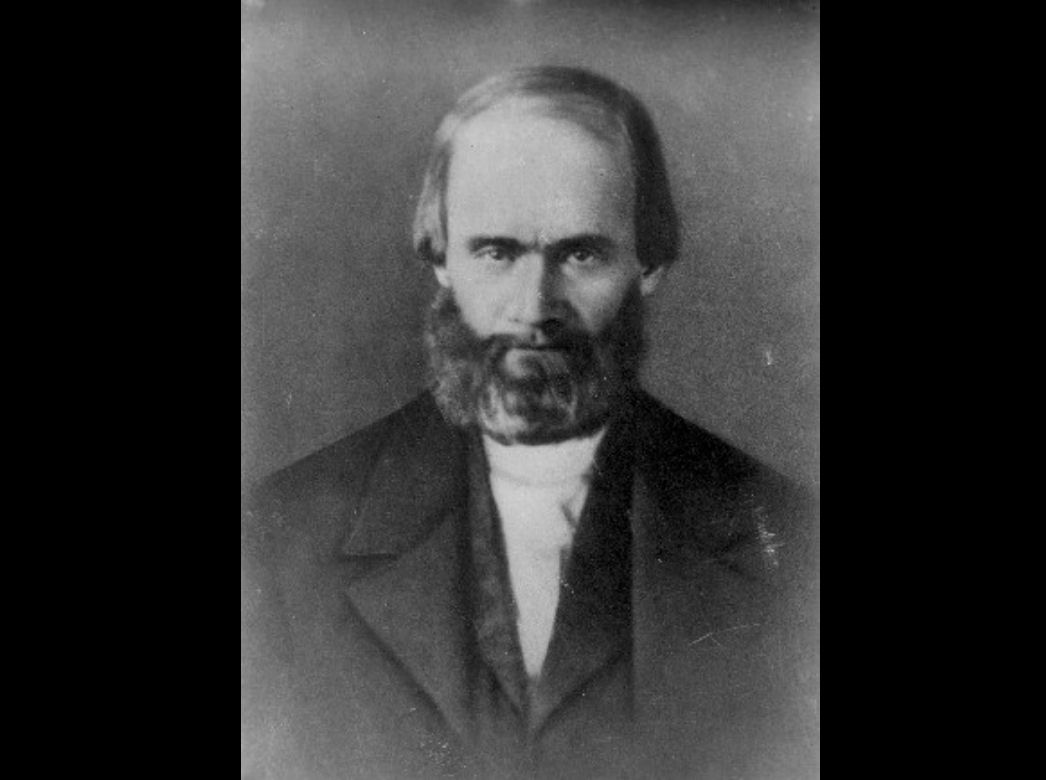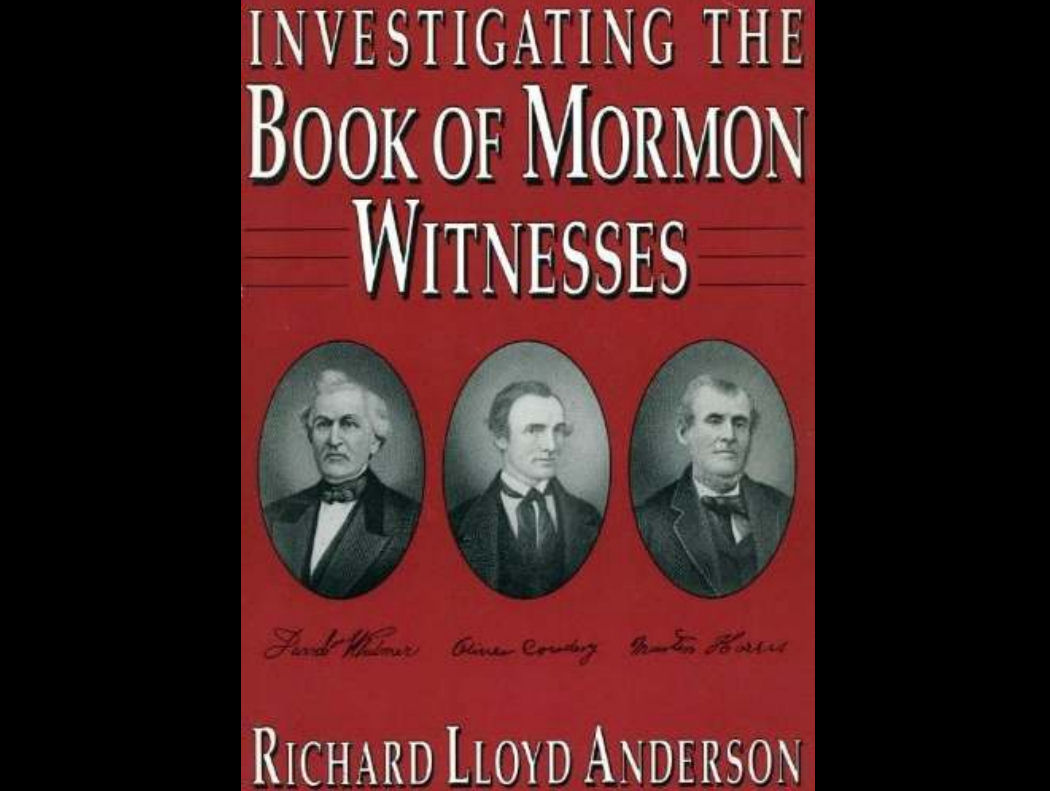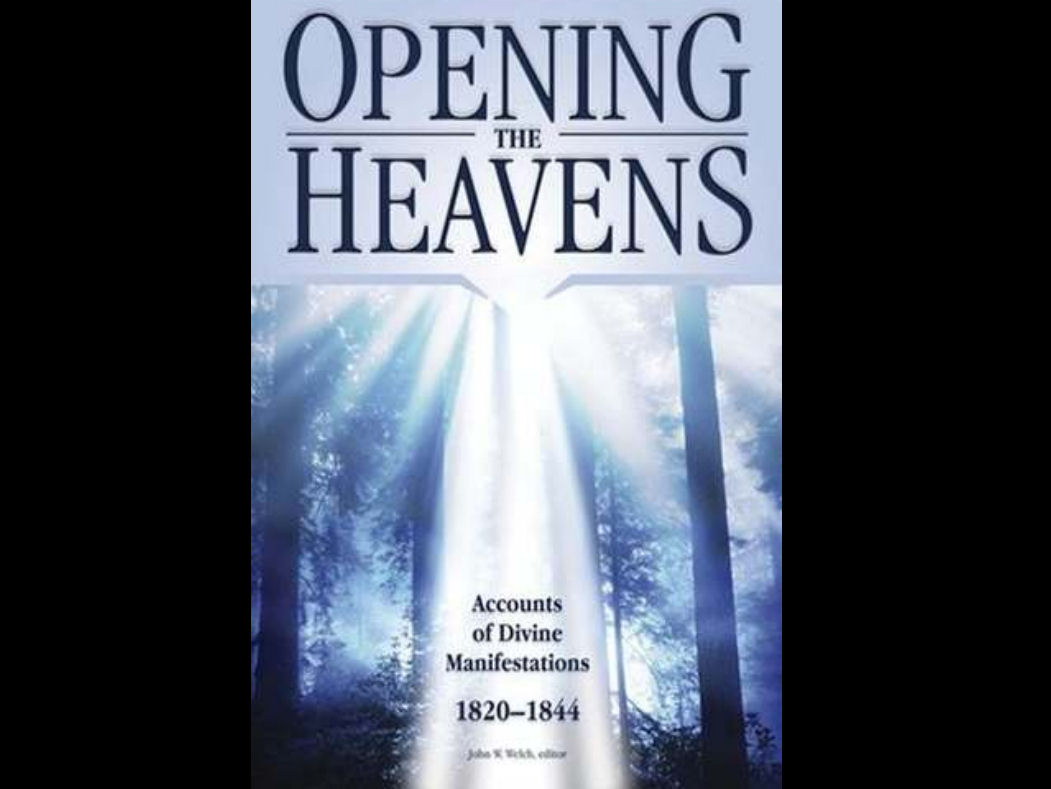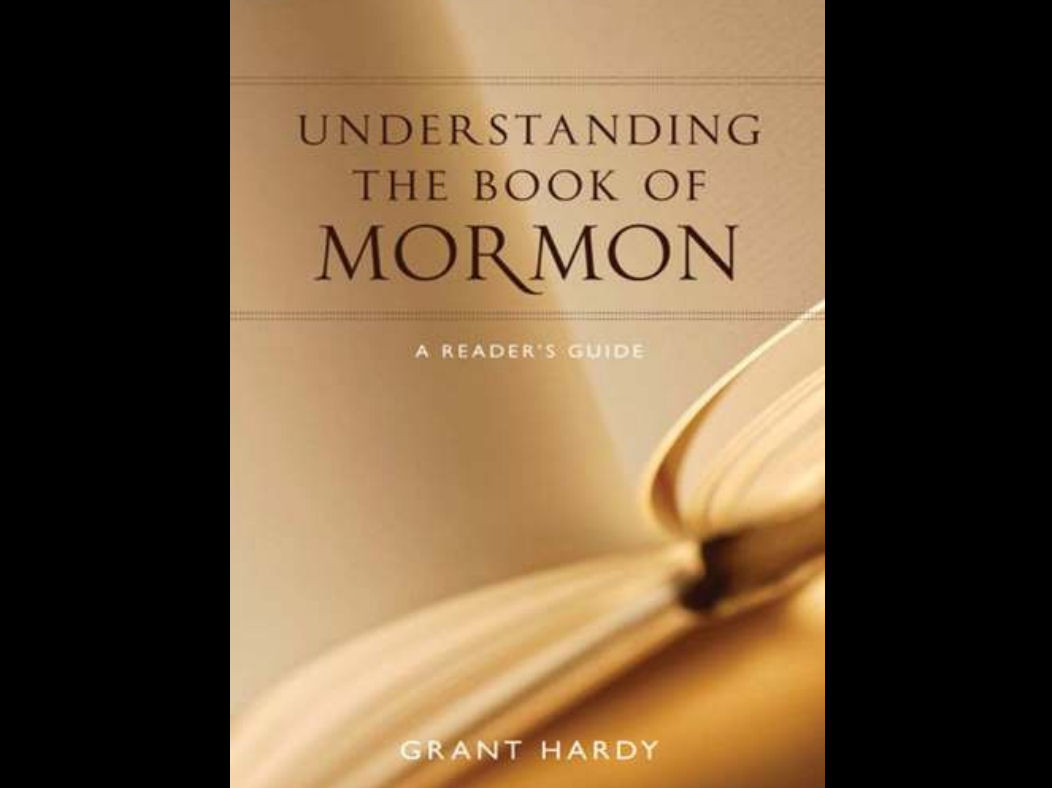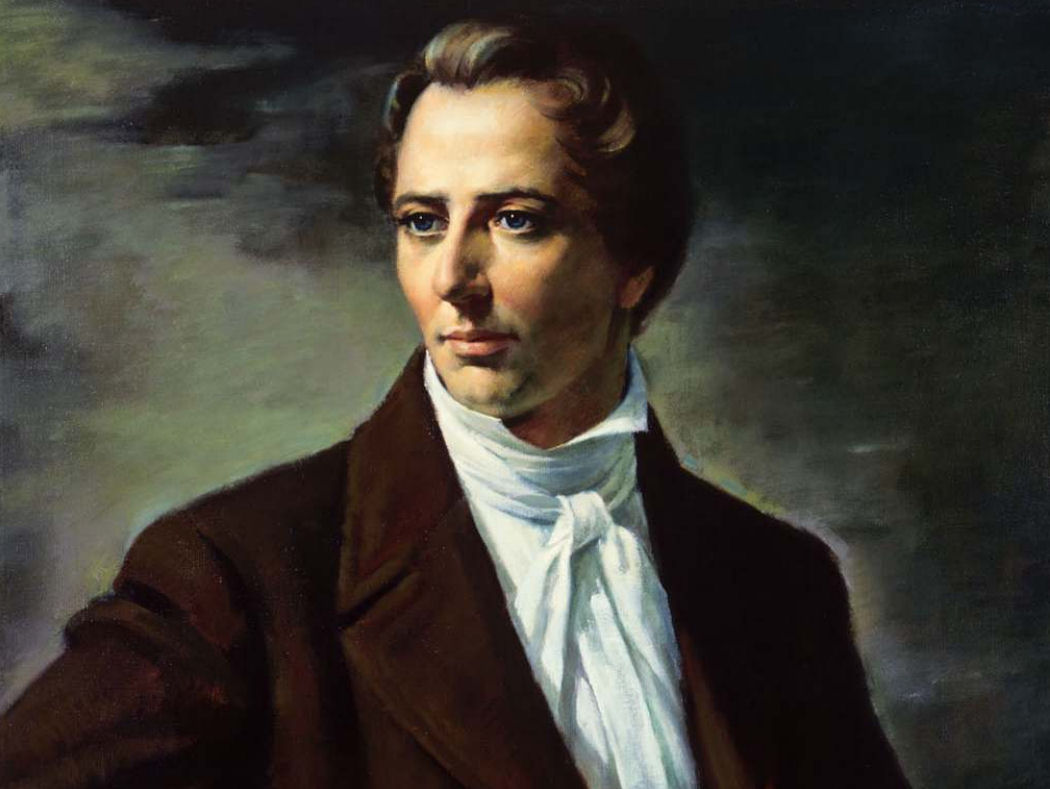[Editor’s note: This transcript has been lightly edited for clarity.]
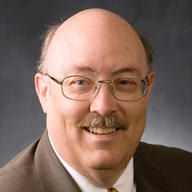
August 8, 2014
Some of you don’t know what the “Letter to a CES Director” is. It’s a letter that’s been circulating online for about a year now…a year and a half, I think, as far as I know, that has gotten quite a bit of circulation. It’s a kind of compendium of standard critical arguments against the truth claims of the Church. It’s entitled “Letter to a CES Director: Why I Lost My Testimony,” and it was written, as the story goes, by request of a CES director who wanted to know why this young man had decided to leave the Church. He wrote the letter. The CES director said he would get back to him with answers, but he did not, according to the story. Now the thing is about 90 pages long, and it’s just a rata-tat-tat list of objections. I can understand why a normal person confronted by that would say, “Well, you know, I’ve got a life. Its 90 pages of quick and dirty objections would take 500 pages to respond to, and probably wouldn’t do much good, so, never mind.”
I have to say, some people have said and speculated online that I’m addressing this topic out of my deep concern and paranoia. Well, I am sort of concerned about the letter in the sense that it’s had some impact, but actually it was not my idea to address it. Someone said, “You know, maybe you should address that. Maybe that would be a good topic.” I said, “‘Yes, OK. I’ll think about that,’ and the next thing I knew, PR was going out saying that’s what I was addressing. So, I will do it. Why not? I was asked to do it and I have to say, my reaction to reading the thing, which I put off reading for a long time, was sadness and frustration. I found it very painful to go through the 90 pages. It is wearisome reading and, at point after point, multiple times per page, I was exasperated. My impression is that the author is someone who had leanings in more of what you might call a fundamentalist direction than my own, but he was blindsided by things that he was learning about history and historical difficulties that he had not encountered before. He lost his trust and felt betrayed, and so he’s in a position now, where anybody speaking on behalf of the Church is probably lying. So, what I say today will not be of much value or interest except to make him mad.
But, I’m not really addressing him. I’m addressing people who might run into these things and are still puzzled by the charges that he makes. As I say, it’s a kind of compendium, not original at all…not really pretending to originality. It’s a compendium of charges and accusations. My impression—I will give you the bottom line–is that the author spent too little time and effort looking at these questions, that he “jumped ship” too soon, that there are answers, at least adequate, and in some cases really much more than adequate to just about every issue raised.
But I think of a case of my own youth in California. Some of you may remember a fairly obscure case that made it to the L.A. Times (as almost any anti-Mormon thing does), where three handwriting analysts had decided they had found…well, two of them had found, the writing of Solomon Spalding in the original manuscript of the Book of Mormon. It was an unidentified scribe. There was a family in my stake that left the Church that week over that issue. Now the whole thing blew up within a week. The handwriting analysts who had made the claim: one of them never really endorsed it, one of them went silent, and the third one absolutely said it was just not true. So, it didn’t make much of a splash really, but it was enough for this one family. They jumped ship too soon. It almost seemed as if they were poised at the door, waiting for a reason to leave. I didn’t know them that well. I don’t know what the story was, but let me read to you something that Jeff Lindsay had to say, sort of about this kind of thing, this motif of the letter. This is not the first one I’ve seen, and, it probably won’t be the last, where you get a whole “shotgun blast” of objections.
One of the challenges, Jeff Lindsay writes, in defending one’s faith, is coping with the critics who use the “big list” technique in their attack. 1 This involves throwing out numerous arguments to create the impression of an overwhelming barrage that decimates the faith in question. The “big list” is loaded with barbed questions that weren’t written in search of a real answer. If there is a good defense to the arguments raised at first…never mind, there are many more to be launched in different directions. As with many topics in fields like history, science and religion, the issues raised in “big list” attacks are often complex and may require exploring abundant details to answer questions properly.
Even for those who are prepared to answer questions on a wide variety of topics, the time it takes to lay a foundation to properly answer a question can be taken by the instantly impatient critics as an admission of weakness and confirmation that they are right, and then the time to move on to the next attack, and the next. If reasonable answers are promptly provided to some attacks, or if the alleged weakness on further examination actually proves to be evidence in favor of the faithful position, the response can be ignored as new attacks from the “big list” are hurled out.
Lindsay cites a well-known science blogger by the name of P.Z. Meyers, who is himself not religious at all. He is an aggressive atheist, but he makes a good point. Meyers says:
There is a common tactic used by creationists, and I’ve encountered it over and over again. It’s a form of the “Gish Gallop.” It’s named after Duane Gish, who’s a famous Creationist Fundamentalist Protestant. Present the wicked evolutionist with a long list of assertions, questions and non-sequiturs, and if they answer with, “I don’t know” to any of them, declare victory. It’s easy: We say, “I don’t know” a lot.
Jack Chick’s “Big Daddy” tract is a version of the Creationist list and contains a fair amount of fantasy as well. You know what they believe will happen: They’ll ask that one question that the scientists can’t answer, and then they’ll have an epiphany, a revelation, and realize that all of their science is a lie, at which time they’ll resign from their university position and join a good, Bible-believing church.
It happens to me all the time too. At one talk I gave, there was a woman at the door who had printed a five-page, single spaced list of questions, and she was telling everyone going in to ask me to answer them. I invited her to come in and listen to the talk and ask them herself, and she ran away. I’ve had a Canadian Creationist do the same thing, and then I talked to him for several hours in the hallway after the talk. He seemed stunned and angry that I actually had answers for most of his questions. I’ve been confronted by people with questions, more like ignorant assertions, about biology, who, once I answered them and revealed that I am a biologist, switched to asking me about geology and the “Big Bang” to get me into a corner where I would have to say, “I don’t know.”2
The approach, Jeff Lindsay says, is painfully familiar to him, and I have to say it’s painfully familiar to me too.
There have been some excellent responses. One of these is the FairMormon site, on the FairMormon wiki, and I have to say, I am tremendously impressed with the amount of work that the wiki has done (Roger Nicholson and Greg Smith, in particular) in developing answers and in making it accessible and in organizing answers to this and other objections. It’s a tremendous thing.
FairMormon does incredible work on a shoestring budget. I mean, it’s astonishing, and with relatively little more (I’ll put in that plug, even though we have reached the fundraising goal for today), with just a little bit more, FairMormon could do much, much more, because it’s a very lean and efficient operation.
Kevin Christensen wrote a piece for Volume 10 of Interpreter (another organization that could use donations) entitled “Eye of the Beholder, Law of the Harvest”, which is an analysis of Jeff Lindsay’s approach and the author of the CES Letter’s approach, and explains how they arrive at so different conclusions to looking at the same data. I’ll mention other places for useful responses in a few minutes. 3
I’m going to go through a few of the issues. The thing is 90 pages long, and I’ve only got a few minutes. In fact, I have very few minutes. I’m going to try to get you out of here close to on time, but I don’t know if I can do it, to be honest.
DNA and the Book of Mormon
DNA and the Book of Mormon is one issue that he addresses. He says this,
[Letter to a CES Director] “DNA Analysis has concluded that native American Indians do not originate from the Middle East, or from Israelites, but rather from Asia.”
Now that is a grotesque oversimplification. He simply doesn’t know the state of the question. It is true that DNA evidence indicates that the American Indians overwhelmingly have some sort of Northeastern Asian background, but that does not rule out the presence of a small group. We’re talking a tiny group from the Middle East, 2600 years ago.
This is another statement he makes:
[Letter to a CES Director] “Why did the Church change the following section of the introduction page of the 2006 edition of the Book of Mormon shortly after the DNA results were released?” Quote: “The Lamanites were the principal ancestors of the American Indians” is changed to, “The Lamanites, and they are among the ancestors of the American Indians.”
Well, the implication is “because the DNA evidence undercut the Church’s position.” That’s not true. I happen to know the backstory, which has never been published. The backstory is, there were people who objected to that heading when it was done in the late 1970s/early 1980s. They were overruled by someone who was in a position of authority. But, they said the Book of Mormon never actually makes that claim. Don’t make the Book of Mormon claim things it doesn’t actually claim. We set ourselves up sometimes for problems when we claim things for the book, but that the book, when carefully read, does not claim for itself.
Now, I’m going to use this as a symbol for the kind of work that’s being done right now, and has been done over the past few decades, on Book of Mormon archaeology. This is John Sorenson’s book, Mormon’s Codex. I’m not saying that it’s the “be all” and “end all,” but it kind of represents the effort that professionally-trained Mesoamericanists have made recently.
Book of Mormon anachronisms
The second issue that he raises is the issue of anachronisms He says,
[Letter to a CES Director] “Horses, cattle, oxen, sheep, swine, goats, elephants, wheels, chariots, wheat, silk, steel, and iron did not exist in pre-Columbian America during Book of Mormon times.”
Again, this is an oversimplification. There’s been a lot written on these sorts of topics, and many of them by John Sorenson (one of the reasons I chose this image) [refers to Power Point slide]. But the author of the letter seems unaware of those things. He doesn’t engage them in any event. I can imagine somebody saying, “The evidence doesn’t persuade me,” but what bothers me is to suggest there is no evidence, there are no counterarguments; that bothers me, and that doesn’t, to me, show a serious engagement with the data.
Book of Mormon archaeology
The third item is archaeology:
[Letter to a CES Director] “There is absolutely no archaeological evidence to directly support the Book of Mormon or the Nephites/Lamanites who numbered in the millions.”
Note that word “directly.” Archaeology very often doesn’t “directly” support claims. You often have to draw inferences from the data. You know, the rocks in the foundations of buildings don’t speak for themselves usually, and there are relatively few inscriptions. I mean, even Jerusalem itself, we’ve known from tradition where it was located, but it was only relatively recently that an inscription was found actually identifying that city as Jerusalem. So, there are limits to archaeology. But again I mention John Sorenson, the writing of John Clark, Brant Gardner, Mark Wright. If the author of the letter has dealt with them there’s no sign of it. I don’t see any evidence that he’s engaged them.
He says this:
[Letter to a CES Director] “This is one of the reasons why unofficial apologists* are coming up with the Limited Geography Model. It happened in Central or South America, and that the real hill Cumorah is not in Palmyra, New York, but is elsewhere and possibly somewhere down there instead.”
* (That’s people like the old FARMS or FAIR now)
This is simply not true. The Limited Geography Model has been created because the Book of Mormon demands it. You can put together all the travel distances and travel times in the Book of Mormon and it’s very clear that they’re not going very far in any direction. We’re not talking about Patagonia to the Aleutian Islands. It’s simply not possible. And so, the text forces this. This sort of thing has been in the works for a long time, before there was any talk about DNA, before the discovery of the DNA double-helix model. DNA was not an issue when this was being created. This is not controversial. It can easily be shown that the limited Mesoamerican model has been in the works for decades. It just wasn’t published until the 1980s, but it existed and was distributed in a kind of underground form for a long time before it was actually published.
Another claim:
[Letter to a CES Director] “Latter-day Saint Thomas Stuart Ferguson was BYU’s archaeology division (New World Archaeological Funding) founder. NWAF was financed by the Church. NWAF and Ferguson were tasked by BYU and the Church in the 1950’s and 1960’s to find archaeological evidence to support the Book of Mormon.”
And the idea is, well, Ferguson failed and Ferguson lost his testimony, and this should discredit the Book of Mormon in the minds of alert, sentient Latter-day Saints. But that statement is wrong on multiple levels. Thomas Stuart Ferguson, for whatever virtues he had, was a lawyer and an amateur hobbyist. He was not the head of the archaeology program at BYU. And the NWAF (I’ve actually written an article on this),4 based on interviews with the founders and with early leaders, and so on, and it’s been published. I mean, there’s no excuse for this. NWAF had non-Mormons on its board. It was mostly non-Mormons. It was specifically forbidden to seek to do explicit Book of Mormon research. It was tasked with working in an area where Latter-day Saints expected it would find evidence, but it was not its task to do that. This is just completely wrong, and Ferguson’s apostasy, whatever it was, his family disputes it. I don’t know exactly what the truth of his mindset was at the end of his life. It may be sad, but it has no significance. And, at the same time, M. Wells Jakeman was an archaeologist, the first trained archaeologist, as far as I know, in the Church, who specialized in Mesoamerican studies. Why doesn’t anybody write about his biography? He was fascinated…believed to his dying day that the Book of Mormon fit into Mesoamerica brilliantly well.
Moving on. Here’s a picture of Wadi Sayq, an area in Arabia that I’m very fond of.
One of the things I notice is that he never deals with positive evidence. It’s always criticisms. Wadi Sayq is one of my favorite evidences for the Book of Mormon. This is the place that a lot of us think was the land Bountiful, the Old World Bountiful, in the Book of Mormon. It’s an unexpected place. You don’t expect to see a place like that in Arabia. Arabia’s a land of sand dunes. You’ve seen “Lawrence of Arabia”; you know what it looks like. And those are the pretty parts. But this is an actual area on coast of the Indian Ocean, the Arabian Sea, really, and it exists in exactly the right spot. And we can show that the land of Nahom, or the area of Nahom, from which you have to travel due east, we can show that that name was there at exactly the time of Lehi. It’s a complex of finds. These things fit together. They’re really wonderfully strong things. No mention of them. Simply ignored. They just don’t exist.
Does that look like what you picture as Arabia? It looks like Hawaii. But that is Wadi Sayq.
Book of Mormon geography
Alright, as soon as I saw this, I recognized it. It’s a map from a book done several years ago by Vernal Holley.
This is his fourth objection: Book of Mormon Geography, and he uses Vernal Holley, who relied on the Solomon Spalding theory of the Book of Mormon, which has been exploded, detonated so many times that it’s exasperating to see it keep coming back. I’ve mentioned, I think, here before that Bill Hamblin and I have wanted to do a film that we call tentatively, “Bill and Dan’s Excellent Adventure in Anti-Mormon Zombie Hell.” The idea is that these just keep coming back. I mean, you shoot them between the eyes and they don’t stop because there’s no brain in there, right? And, to see the Spalding manuscript theory just keep coming and coming, but the methodological problems with Vernal Holley’s maps are multitudinous and we published an article in the old FARMS Review clear back at the very beginning in 1989 showing some of those problems. For one thing, he goes to a map of the northeastern United States. He goes through all the toponyms, the place names there, and then he tries to find things in the Book of Mormon that are vaguely familiar. They sound sort of the same, but some of them are really a stretch. Jacobsburg, well that’s Book of Mormon Jacobugath. Antioch, that’s Anti-Anti. My favorite, Sherebrook, which becomes the Book of Mormon Shurr. Well, they’re not very good parallels, but, the other thing is, they’re in the wrong places. The Book of Mormon says where they are. They’re not in the same relationships on the map. It’s just…you know, if you take a long enough list of place names, you’ll find parallels, especially if you’re “loosy-goosy” about it. You’ll find parallels with just about anything. This is easily done. I could show you words that definitely come from Arabic that occur in English, that have no relationship. They’re vaguely similar. They’re totally different definitions. If you have no standards for what counts as evidence, anything could count as evidence. Well, anyway, I don’t want to go on at length about that. There’s an excellent FairMormon response, a summation response, to Vernal Holley’s maps. Again, no notice of it.
View of the Hebrews as a source for the Book of Mormon
Item number five. He refers to View of the Hebrews. Ethan Smith’s, View of the Hebrews, which some critics see as a source for the Book of Mormon. We were so terrified of the View of the Hebrews at BYU that BYU actually published View of the Hebrews so people could see it. I mean, it’s just not similar at all. But there’s no engagement with that, no engagement with Larry Morris’s superb year 2000 BYU Studies article on “Oliver Cowdery’s Vermont Years and the Origins of Mormonism”, which shows that the link that people posit between Ethan Smith and Oliver Cowdery almost certainly didn’t exist.
The Late War as a source for the Book of Mormon
He then gets into, in item number six, The Late War, which has already been here. It’s a retelling of the War of 1812 in biblical style. No mention of Ben McGuire’s article in Interpreter Volume 7 from last year. Even in his revised version of the letter, I don’t think that there’s one – I may have missed it. I have to admit I had a hard time concentrating on the letter, but I didn’t see one. And now he’s going to have to deal with the presentation yesterday by Matt Roper and Paul Fields. There are just all sorts of problems.
Accuracy of Church art
Let’s go on a little bit further. Here’s an illustration: A traditional view of Joseph Smith translating the Book of Mormon.
Now, there are several things wrong with it, and he points to this sort of thing and says this is Church deception. Joseph didn’t have the plates with him quite often, and here he is, following along with the text on the plates. Well, you know that’s not true, because the witnesses didn’t see the plates all the time, right? This can’t possibly be true. When the witnesses saw the plates it was a big deal for them, because Joseph wasn’t just sitting there translating with the plates in front of him all the time while people wandered around and so on. But he says, “Look, the Church is being deceptive”, because it doesn’t show Joseph with his face in the hat using the seer stones. Well, my response to this partly would be, “What in the world are you thinking of? Trying to derive doctrine from illustrations? Or expecting that illustrations are going to give you the accurate picture?”
Here’s another one: there Joseph has the curtain between him and the scribe. That’s also wrong. I’ll come back to that.
This one is equally wrong. It’s not a sign of evil or deliberate conspiratorial intent. It’s just an indication that the illustrators often just don’t get it right.
And I’ll give you some other illustrations of that sort of thing. Look at this famous picture.
All right? Now that’s Samuel the Lamanite on a Nephite wall. Are any walls like that described in the Book of Mormon? No. You have these simple things, and they’re considered quite a technical innovation at the time of Moroni, where he digs a trench, piles the mud up, puts a palisade of logs along the top. That’s it. They’re pretty low tech. There’s nothing like this. This is Cuzco or something. But this is hundreds of years after the Book of Mormon and probably nowhere near the Book of Mormon area, and some of you may have heard me say it before, after Samuel jumps off this Nephite wall you never hear about him again. The obvious reason is…he’s dead. He couldn’t survive that jump. But again, do you draw your understanding of the Book of Mormon from that image? Or, do you draw it from what the book actually says?
Now, artists typically don’t get things right, or quite often don’t get things right. I’ll tell you a quick story about this one. I hesitate to go on too long because I don’t have much time. This is a very famous illustration of the eight witnesses.
I had a discussion online, years ago, with an ex-Mormon critic. Some of you know the name, Brent Metcalfe. And we were arguing back and forth about the existence of the plates. And he said that all of the experiences of the witnesses were visionary. They just imagined things. They were hallucinating. And I said…but the Eight Witnesses were really, really…it’s a matter of fact sort of experience: they go out in a clearing in the woods. There are the plates on a tree stump, they heft them and all this sort of thing, and he said, “There was no tree stump.” And we went back and forth and back and forth about this stupid tree stump. And I finally said, “Look, OK. I will grant you no tree stump if you will grant me the plates…because I don’t care about the tree stump.” But in the meantime, I wrote a letter to my friend Richard Anderson, whose name will come up again in a minute, if I have a minute, who I think is one of the great historians in the Church, and he’s the great authority on the witnesses. And I said, “Richard, help me. I cannot find a source indicating there’s a tree stump.” And he said, “Oh yeah, definitely there is, there is. I’ll get it back to you.” A few days later he calls and he says, “You know, I can’t find any mention of a tree stump.” And we finally both decided it was that stupid picture that gave us the idea. There’s actually no account that mentioned a tree stump. So, pictures can form your image, but you have to be careful you’re always controlling those images by looking at the actual data.
OK, now it’s not just the Mormons who do this sort of thing. Have any of you read, “Out of the Silent Planet” by C.S. Lewis? C.S. Lewis is a passion of mine. This is a great novel, first of the so-called Perelandra trilogy.
Now, if you’ve read the story, you know that image on the cover, that’s the first cover of the novel when I bought it, that cover bears almost no relationship to the actual story. There’s nobody in a space suit in that. This looks like the surface of the moon or something. The story describes Mars, which is where it takes place, Malacandra, it’s called, in the novel, describing it very, very differently from that. So, this illustrator, I assume, hadn’t even read the book.
But here’s another one. This is The Flight of the Holy Family into Egypt.
Now if you look at these pictures, and there are lots of them, it was a favorite topic for artists in a certain period. It’s amazing how they think Egypt looked or the route, say, between Bethlehem and Egypt. It is like going through Flanders. In some it’s like you have to cross the Swiss Alps. I guarantee you, the Sinai looks nothing like this. Anyway, they’re often dressed like Turks with turbans. Those things [are] just totally inaccurate, totally inaccurate.
Frankly, for that matter, some of you remember Ben Hur. Ben Hur is arrested in Jerusalem and he has to go to the galleys, right? Do you remember the scene? It’s a wonderful scene, very moving, where he’s going along…he’s dying of thirst, crossing sand dunes and so on, and he encounters the Savior, and the Savior gives him water to drink. My question, though, is, “If he’s been arrested in Jerusalem and he’s going to the sea, which is the Mediterranean, is he going via the Gobi Desert or something?” I mean, that’s actually one of the most fertile areas of Israel. You’re going along the plains of Sharon. It’s agricultural land, and it’s not very far. You wouldn’t die of thirst even if you walked that hardly without a drink at all. So people always assume…they set up these images of what the place looks like, but they’re wrong.
Translation of the Book of Mormon
OK, now this is not The Flight of the Holy Family into Egypt. This is Royal Skousen, and I want to say something about some things that I derive from Professor Skousen’s wonderful work on the textual history of the Book of Mormon, which are relevant to the question of Book of Mormon translation.
I’m going to read a little bit here. Professor Royal Skousen of Brigham Young University, an internationally respected linguistic theorist, has devoted more than a quarter of a century to intensive study of the text of the Book of Mormon, and most especially to the original and printer’s manuscripts of the book. His work has appeared in large, handsomely produced volumes published by BYU’s Maxwell Institute for Religious Scholarship, Yale University Press, and now, to our delight and honor, the Interpreter Foundation. It’s Professor Skousen’s strongly considered opinion that the manuscript evidence supports the traditional account of the origin of the Book of Mormon, and that it does not support the notion that Joseph Smith composed the text himself, or took it from any other existing manuscript. Yet all the witnesses thought that Joseph Smith somehow saw words, and read them off to his scribes. Taken together, these two facts are highly significant.
Now I want to briefly examine some of the relevant data. First of all, the evidence strongly supports the traditional account in saying that the original manuscript was orally dictated. The kinds of errors that occur in the manuscript are clearly those that occur from a scribe mishearing, rather than from visually misreading, while copying from another manuscript. The printer’s manuscript, by contrast, shows precisely the types of anomalies that one would expect from a copyist’s errors. Skousen’s meticulous analysis even suggests that Joseph was working with up to about 30 words at a time. It’s apparent, too, that Joseph could see the spelling of names on whatever it was that he was reading from. When the scribe had written the text, he or she would evidently read it back to Joseph for correction. So, the Prophet seemingly had something with him from which he was dictating, and against which he could check what his scribes had written. But what was it? The witnesses are unanimous that he didn’t have any books, manuscripts or papers with him during the translation process, a process that involved lengthy periods of dictation. For example, in an interview with her son, Joseph Smith III, not long before she died, Emma Smith insisted that Joseph had no text with him during the time of translation.
Question: Had he not a book or manuscript from which he read or dictated to you?
Answer: He had neither manuscript nor book to read from.
Question: Could he not have had, and you not know it?
Answer: If he had had anything of the kind, he could not have concealed it from me.
“In writing for your father,” she told her son, “I frequently wrote day after day often sitting at the table close by him, he sitting with his face buried in his hat with the stone in it dictating hour after hour with nothing between us.” Note: Nothing between us, no curtain. “The plates often lay on the table without any attempt at concealment, wrapped in a small linen tablecloth which I had given to him to fold them in. I once felt of the plates as they lay thus on the table, tracing their outline and shape. They seemed to be pliable like thick paper, and would rustle with a metallic sound when edges were moved by the thumb, as one does sometimes thumb the edges of a book.”
Now, Emma Smith could speak authoritatively regarding the period during which she herself served as scribe, but what about the much longer period when it was Oliver Cowdery who was taking the dictation? In fact, Emma could speak from personal experience with respect to that time as well. While they were in Harmony, Pennsylvania, where most of the Book of Mormon text was committed to writing, Emma says that Joseph and Oliver were not far away from her.
“Question: Where did father and Oliver Cowdery write?”
“Answer: Oliver Cowdery and your father wrote in the room where I was at work.”
Not long after speaking with her, Joseph III wrote a letter in which he summarized some of her responses to his questions. “She wrote for Joseph Smith during the work of translation, as did also Reuben Hale, her brother, and O. Cowdery, that the larger part of this labor was done in her presence and where she could see and know what was being done, that during no part of it did Joseph Smith have any manuscript or book of any kind from which to dictate, except the metallic plates, which she knew he had. Nor, incidentally, did Emma believe that Joseph Smith was capable of inventing the Book of Mormon and dictating it off the top of his head. Joseph Smith,” she said, “could neither write nor dictate a coherent and well-worded letter,” her son’s note reported as telling him, “let alone dictating a book like the Book of Mormon.”
A correspondent from the Chicago Times interviewed David Whitmer on the 14th of October 1881, and got essentially the same account. “Mister Whitmer emphatically asserts, as did Harris and Cowdery, that while Smith was dictating the translation, he had no manuscript notes, or other means of knowledge, save the seer stone and the characters as shown on the plates, he being present and cognizant how it was done.” Similarly, the Saint Louis Republican, based upon an interview in mid-July of 1884, reported that “Father Whitmer, who was present very frequently during the writing of the manuscript of the Book of Mormon, affirms that Joseph Smith had no book or manuscript before him from which he could have read, as asserted by some that he did; he, Whitmer, having every opportunity to know whether Smith had Solomon Spalding’s or any other person’s romance to read from.”
David Whitmer repeatedly insisted that the translation process occurred in full view of Joseph Smith’s family and associates. It would appear, in fact, that the common image of a curtain hanging between the Prophet and his scribes, sometimes seen in illustrations as we saw here, of the story of the Book of Mormon, was not the usual modus operandi. There was indeed a curtain, at least in the latter stages of translation process, however that curtain was suspended not between the translator and his scribe, but near the front door of the Peter Whitmer home in order to prevent idle passers-by and gawkers from interfering with the work. In order to give privacy to the proceeding, a blanket…Well, I don’t think I need to quote this, it makes the point.
On another occasion Whitmer recalled, “I often sat by and heard them translate and write for hours together. Joseph never had a curtain drawn between him and his scribe while he was translating. He would place the director in his hat and then place his face in his hat so as to exclude the light, and then read the words as they appeared before him.”
And there’s more evidence that Joseph was not simply reading from a manuscript. Here’s a quotation from David Whitmer again.
“He could not translate unless he was humble and possessed the right feelings towards everyone. To illustrate, so you can see, one morning when he was getting ready to continue the translation, something went wrong about the house and he was put out about it, something that Emma, his wife, had done. Oliver and I went upstairs, and Joseph came up soon after to continue the translation, but he couldn’t do anything. He could not translate a single syllable. He went downstairs out into the orchard and made supplication to the Lord…”
Something he liked to do. He liked to pray in groves of trees. He does it again here. It’s a characteristic.
“…He made some supplication, was gone about an hour, came back to the house, asked Emma’s forgiveness and then came upstairs where we were and the translation went on all right. He could do nothing save he was humble and faithful.” 5
And there are other accounts where Whitmer tells the same story to newspapers. It would seem from this anecdote that Joseph needed to be in some way spiritually or emotionally ready for the translation process to proceed, something that would be wholly unnecessary if he had simply been reading from a prepared manuscript. As David Whitmer explained, Joseph occasionally “found he was spiritually blind and then could not translate. He told us that his mind dwelt too much on earthly things, and various causes could make him incapable of proceeding.” Now at this point a skeptic might, of course, suggest, that emotional distractions interfered with Joseph Smith’s ability to remember a text he had memorized right the night before for dictation to his naive secretaries, or that personal upheavals hindered his improvising of an original text for them to write down as it occurred to him. But such potential counter-explanations run into their own serious difficulties. I just want to ask, do you even think it’s remotely possible? I don’t. To imagine Joseph Smith, or anyone else, memorizing or composing nearly 5000 words daily, day after day, week after week, in the production of a lengthy and complex book. That’s a question you can ponder for yourselves. I’ll simply say that, as someone who writes a lot, and rapidly, and has kept a daily record of how many words I produce each day for many of the past 15 years, I’ve never come close to maintaining a pace like this, even on a computer. I just find it impossible to imagine.
Now, there’s another story. I think I’ll skip it in order to save some time. Well, you know the story about Martin Harris substituting a rock for the seer stone, and Joseph comes in and tries to use it and can’t. He says, “Martin, everything is as dark as Egypt.” I’ve often wondered having lived in Egypt, where it is blazing sun all the time, what on earth does that mean? But, anyway, I guess this is the general point, the point being here that if he just memorized it he wouldn’t have even noticed what was wrong with this rock.
I don’t know how the rock worked, but it’s clear from a careful analysis of the manuscript that Joseph did not know in advance what the text was going to say. He hadn’t memorized it. He was not making it up because he didn’t know what was going to be there. Chapter breaks and book divisions apparently surprised him. He would see some indications, evidently, of a break in the text. In each case he would tell his scribe to write “chapter.” The numbers were then added later. For instance, at what we now recognize as the end of First Nephi the original manuscript first indicates merely that a new chapter is about to begin. In the original chapter divisions that upcoming text was marked as “Chapter 8” (Roman numerals). When Joseph and Oliver subsequently discovered that they were instead at the opening of a wholly distinct book, Second Nephi, the chapter heading was crossed out, and a more appropriate heading was inserted. This is quite instructive. It indicates that Joseph could only see the end of a section, but did not know whether the next section would be another portion of the same book, or rather the commencement of an entirely new book altogether.
There were other things that, again, I’m going to summarize because I’m short on time. There are other things that caught him by surprise. He couldn’t pronounce the names in some cases. He would have to spell them out. Or there are times when he asked a question, like, “Emma, did Jerusalem have a wall around it?” He’s surprised. And she says, “Well, yes, I think it did,” and he says, “Oh, good. I thought maybe that I was being deceived.” Because the cities he knew, Palmyra, didn’t have walls around them, certainly not like Arnold Frieburg’s.
Here’s the bottom line: thus we see that Joseph Smith appears to have been reading from something external to himself, but that he had no book, or manuscript or paper with him. It seems to have been a text that was new and strange to him and one that required a certain emotional and mental focus before it could be read. It also seems to have required the exclusion of circumambient light so he could see it more clearly because he was doing this multiple hours a day like looking at a computer screen. Your eyes begin to give out, especially if there’s a glare behind the computer. People typically don’t put a computer up against a plate glass window where the sun is shining, right, because you want to see it more clearly. He had to be in mental or emotional focus to be able to work on it and so on. All this is entirely consistent with Joseph’s claim that he was deriving the text by revelation by the power of God through an interpreting device, but does this seem reconcilable with the idea that he smuggled in the Spalding manuscript or something like that?
The First Vision
Here’s another issue: The First Vision.
All sorts of criticism in the Letter to a CES Director about the First Vision accounts, but there’s no serious engagement with people who have responded to the issues. No serious engagement with Jack Welch’s work on the topic, or the earlier work of Milt Backman, Richard Lloyd Anderson or Richard Bushman, for example. No sign of it.
Book of Abraham Facsimile 1
Here’s one I want to spend a little more time on. There’s Book of Abraham Facsimile 1.
This is the ninth objection that I’ve chosen to look at.
[Letter to a CES Director] “Of all of the issues, the Book of Abraham is the issue that has both fascinated and disturbed me the most. It is the issue that I’ve spent the most time researching, because it offers real insight into Joseph’s modus operandi, as well as Joseph’s claim of being a translator. It is the smoking gun that has completely obliterated my testimony of Joseph Smith and his claims.”
Now I wrote an article years ago. I can’t claim it was original. I did it as kind of a collective statement on behalf of people that were associated with me at what became the Maxwell Institute/FARMS called News from Antiquity. It published in January 1994 in the Ensign, where I laid out kind of a consensus view of things about the ancient world that the Book of Abraham gets right. There’s no notice of that. It’s not only authorial pride; I’m just irritated that the issue is not addressed. But, he goes on to say things like this: “The Book of Abraham teaches a Newtonian view of the universe. Its Newtonian astronomy concepts, mechanics, and models of the universe have been discredited by 20th century Einsteinian physics.” Now, that irritated me too because John Gee, and Bill Hamblin, and I wrote a piece a number of years ago published in a volume by the Maxwell Institute in which we argued that the Book of Abraham makes sense not as Newtonian physics, but as a geocentric model of the cosmos. It is, in our view anyway, not Newtonian physics. But that article, even if you think it’s wrong, is not even noticed. It’s just this naive idea that it’s representing the kind of physics that Joseph Smith would have known in the 19th century and therefore it discredits Joseph. But the Book of Abraham actually works really well as a kind of primitive geocentric astronomy, the kind that you might have understood in Egypt, the kind that would have been comprehensible to Abraham at that period. It has the earmarks of antiquity on it, to me.
The letter goes on to say this, speaking of Joseph Smith:
[Letter to a CES Director] “He names gods that are not part of the Egyptian belief system, of any known mythology or belief system.” “Joseph Smith got everything wrong about the papyri, the facsimiles, the names, the gods….it’s gibberish.”
Now, the Book of Abraham is anything but gibberish. I mean, just try reading it. It’s not gibberish. It’s a very impressive little book. It’s not true the names of the gods cannot be connected at all with the ancient Near East. There are several articles on this showing plausible identities for those gods, but I want to look more closely at one particular case.
This is an image of the syncretized god Sobek-ra, the crocodile god of the middle kingdom, with Pharaoh Amenhotep III. It’s a larger than life-sized statue.
Some of you may have been in Luxor, Egypt. It stands right in the entry lobby of the museum there in Luxor. One noteworthy element of the religious situation portrayed in the Book of Abraham is the identification of a crocodile as the idolatrous god of Pharaoh, right there underneath the lion couch. That’s a kind of an odd thing to come up with if you’re a yokel farm-boy from upstate New York. Is that the first thing that comes to your mind? “Oh, idolatrous god of Pharaoh!”
Although this may have seemed strange in Joseph Smith’s day, discoveries in other ancient texts confirm this representation. Unas or Wenis, for example, was the last king of the fifth dynasty, around 2300 B.C., and his pyramid still stands at Saqqara, south of modern Cairo. Utterance 317, Unas’ pyramid texts, includes the following: “The king appears as the crocodile god Sobek, and Unas has come today from the overflowing flood. Unas is Sobek, green plumed, wakeful, alert….Unas arises as Sobek, son of Neith. One scholar observes that “the god Sobek is … viewed as a manifestation of Horus, the god most closely identified with the kingship of Egypt” during the Egyptian Middle Kingdom era (around 2000 B.C., maybe a little later), which includes the time period that tradition indicates is Abraham’s time.
Intriguingly, Middle Kingdom Egypt saw a great deal of activity in the large oasis to the southwest of modern Cairo known as the Faiyum. Crocodiles were common there. You know what the name of the place was to the Greeks? The major town there was called “Crocodileopolis.”
Does that give you a clue? Crocodiles were common there and Sobek was the chief local deity. The [wife of the] last king of the 12th Dynasty, which may include the period of Abraham’s life, even adopted the name of the crocodile god, calling [herself] Nefru-Sobek6 (“Beautiful is Sobek”). And five pharaohs of the next dynasty, the 13th, took the name Sebek-hotpe (“Sobek is content”).7
He got everything wrong about the facsimiles, right? That’s just not true.
Polygamy
Polygamy is a big issue for the Letter to a CES Director too, but what’s noteworthy to me is the things that are not engaged. And I just mention a couple of recent things, but these represent work that’s been done over the past decade or so on polygamy. This is a book by Newell Bringhurst and Craig Foster called Persistence of Polygamy.
At least three of the essays in that particular volume are directly relevant to charges made in the letter, but it doesn’t address them. Here are the three volumes of Brian Hales’ massive work on Joseph Smith’s polygamy, again, essentially unaddressed.
Here’s the website that Brian and Laura Hales are now doing where a lot of these issues are discussed [josephsmithspolygamy.org]. No engagement with this or with anything, as far as I can see, that they put forward.
Witnesses to the Book of Mormon
The author of the letter then attacks the witnesses. And one of the things that is now done, the newly fashionable way of addressing the witnesses is to say, “Well, these were primitive people, you know, of a different era. They really couldn’t distinguish reality from fantasy.” And so, there was an article that Richard Lloyd Anderson wrote for the old Journal of Book of Mormon Studies.
I confess, I was the one who provoked him into doing it. I pestered him and pestered him and pestered him for about two years, because I thought this article was necessary: “Attempts to Redefine the Experience of the Eight Witnesses.” The eight witnesses were explicit in many cases. They held the plates. They saw them. Hyrum Smith said, “With these eyes… I held them with these hands.” And then I hear people say, “Well, they never really claimed to see them with their natural eyes.” What? What more could they say? It’s like they’re directly addressing these critics today. But those sorts of statements are ignored in favor of often second- and third- and fourth-hand statements suggesting they never actually saw or touched the plates at all.
This is what he says, the author of the letter:
[Letter to a CES Director] “The mistake that is made by 21st century Mormons is that they’re seeing the Book of Mormon Witnesses as empirical, rational, nineteenth-century men instead of the nineteenth-century magical-thinking superstitious and treasure-digging men they were.”
I confess, as somebody who has spent a lot of time, much of my life, looking at people from pre-modern periods, that the sheer condescension of this, the chronological smugness and complacency of that statement irritates me, and not merely because I’m a believing Latter-day Saint. It’s rather like someone to ascribe early Christian belief in the resurrection of Jesus to the supposed fact that ancient people, unlike us, hadn’t yet realized that dead people tend to stay dead, which, if it were true at all, would leave us wondering why they thought the resurrection of Jesus was such a big deal. Happens all the time, right?
But recently the preferred method of dealing with the witnesses is simply to say they are primitive and superstitious and so on. But, here’s a paragraph I wrote some years ago, a couple of paragraphs, and I’m going to read them because I’m fond of them. Some of you may have heard it before, but I think the point needs to be made:
It seems implausible to assume that the witnesses, early nineteenth-century farmers who spent their lives rising at sunrise, pulling up stumps, clearing rocks, plowing fields, sowing seeds, carefully nurturing crops, herding livestock, milking cows, digging wells, building cabins, raising barns, harvesting food, bartering, in an often cashless economy, for what they could not produce themselves, wearing clothes made from plant fibers and skins, anxiously watching the seasons, and walking or riding animals out under the weather until they retired to their beds shortly after sunset in “a world lit only by fire,” that they were estranged from everyday reality.
It’s especially unbelievable when the claim is made by people whose lives, like mine, consist to a large extent of staring at digital screens in artificially air-conditioned and artificially lit homes and offices, clothed in synthetic fibers, commuting between the two in enclosed and air-conditioned mechanical vehicles while they listen to the radio, chat on their cell phones, and fiddle with their iPods, whose inner workings are largely mysterious to them, who buy their prepackaged food (with little or no regard for the time or the season) by means of plastic cards and electronic financial transfers from artificially illuminated and air-conditioned supermarkets enmeshed in international distribution networks of which they know virtually nothing, the rhythms of whose daily lives are largely unaffected by the rising and setting of the sun. Somehow the current generation seems ill-positioned to accuse the witnesses’ generation of being out of touch with reality.8
And, I think of Martin Harris with the plates, at one point, before he is actually a witness, sitting on his lap in a box. He hasn’t seen them, but he can feel them. You know, rocks are heavy, but lead is heavier, right? And gold is heavy. And sometimes, the box is just too small to be full of rocks. It wouldn’t be as heavy as it was, and he said, he was sitting there thinking this is really heavy and I knew that they had to be either lead or gold, and I knew that Joseph didn’t have enough credit to get so much lead. I’ve always thought that was a funny comment. Yeah, so it’s obviously gold. Well, as a matter of fact, it was. But that scarcely seems mystical or estranged from reality to me.
And then you have the Smith women feeling the plates, hearing them rustle against one another. These are not mystical visionary experiences. This is matter-of-fact stuff. They are cleaning the house; they have to move the darn plates. They’re 60 pounds. I’m very impressed with the witnesses. They cannot be brushed aside as easily as all that.
James Strang and the Strangite witnesses
Here’s a picture of James Jesse Strang.
The author of the letter brings up the Strangite witnesses and says basically they are the same kind of thing that Joseph had. I’m just going to summarize what I have written here in order to go through it more quickly. The Strangite witnesses never claim a supernatural experience, several of them apostatized, several of them said, “You know, it looked to me like Strang probably made them.” No one doubts they existed. The question is where did they come from? He put them on display and people looked at them and they said, “It looks like the kind of stuff you make a teapot out of.” This is probably what it was. These are not very impressive witness testimonies, and it took Strang ten years to produce his book. Joseph dictated his in two months. I mean, at every point the contrast works in Joseph Smith’s favor, it seems to me.
Other issues
Ok, well, the letter goes on, and on, and on, and on, and on, and on. Everything is thrown in: The Paul Dunn story, the Salamander Letter, Church finances, the September Six. The author dislikes the temple, thinks it’s silly.
Well, I wonder: OK, is that the attitude before deconversion? That would be interesting. Or is that the attitude afterwards? In which case, well, that says something too. But frankly, to be honest, I ran out of patience. Ninety pages – it was boring as could be. So, I want to recommend some things. I don’t like just playing defense, so I want to be really quick and some of you have heard me say this before. I’m going to keep beating this drum because I see casualties all the time.
Affirmative things rather than negative things
It is not enough to simply play defense. If you’re playing a football game and your defense is always on the field, you’re probably going to lose. They might occasionally get an interception or a fumble, and score, but probably you’re going to lose. Likewise, a metaphor I heard the other night from John Lynch was that we are often trying to fill in the holes experienced in testimony. Well, if we fill them in, we just bring them back up to normal ground level. That’s not enough. We want to build things up. There are lots of metaphors you could use. If we’re always just putting out fires, you’re going to miss one. You know, eventually you’re going to miss a fire. So, build conditions where the fires don’t happen. Soak your lawn.
So I would rather do affirmative things than just negative things, and I’m going to very quickly go through a few recommendations here. For example, I’ve mentioned Richard Anderson before: Investigating the Book of Mormon Witnesses.
This is, to my mind, one of the great books ever published in Mormonism. Now, that’s not the only thing he wrote on the witnesses, but it will stand in for the other things. A friend of mine once sat down beside me while I was surreptitiously sitting at the back of a Gospel Doctrine class re-reading that book. And he sat down next to me, he teaches Religious Ed. at BYU and he said, “You know, next to the scriptures, that is the most faith-promoting book I’ve ever read.” Well, it is an impressive book, and Richard Anderson has worked hard on the witnesses and has shown that they are sane, stable, reasonable, reputable, respected, consistent, honest people. And that counts for a huge amount. Not just that book, as I say, but other things.
Another book: “Opening the Heavens,” by John W. Welch.
It deals with six issues basically. The First Vision, the coming forth of the Book of Mormon, the restoration of the priesthood, Joseph Smith’s visionary experiences generally, the restoration of temple keys, and finally the succession in the presidency, notably that transfiguration of Brigham Young in Nauvoo. It is a deeply faith-promoting book, particularly on issues like the First Vision and so on. I highly recommend it. I wish people in the Church would read these. When people come to me and say “I know someone who’s losing a testimony,” or “I’m having trouble,” I would say, “Would you read these? We’ll deal with your specific objections, but read these.” This is a kind of general packet I suggest to people.
Here’s another one, and I could probably come up with others, but these occur to me. Mark McConkie’s book, “Remembering Joseph”, is a huge compilation of eyewitness accounts of Joseph, not all of them on issues related to his veracity, but many of them that do relate to that, and it includes a CD that includes 2000 pages of material that he couldn’t cram into this. It’s a tremendous collection, and the stories that are told, clearly to me, strongly indicate the credibility of Joseph.
And another: “Understanding the Book of Mormon,” Grant Hardy’s book from Oxford University Press, written for a non-LDS audience.
He is not arguing for the truthfulness of the Book of Mormon, but to me it makes a powerful argument for just that. His argument is, with really meticulous analysis, that Nephi, Mormon and Moroni are distinct personalities who have different approaches to what they’re writing, different philosophies of history, different views of the universe in a way. Now, to me, the most economical explanation of that is they are three different personalities. They are consistently different. How do you explain that? That doesn’t come from Solomon Spalding. It doesn’t come, I think, from Joseph Smith as “yokel” dictating it on the fly, eight and a half to eleven pages of the printed edition daily. Rapid, rapid pace. That’s a book that I recommend, a little more difficult than the others, but to me it makes a powerful, powerful case.
And I’ll just toss in this other one to stand for all the kind of work that was done by the…by at least the “old FARMS”, the old Maxwell Institute, in arguing for the ties of the Book of Mormon in striking ways to the ancient Near East, to ancient Mesoamerica and so on. Things that, in my mind, are rather difficult to explain away, and there are lots and lots and lots of them…well over a hundred distinct arguments that you could make. I think that that needs to be summarized even more concisely than what we have there, but that’s a good starting point.
Let me make just a couple more points and then I’ll try to shut up. I think that much is dependent on the attitude that we bring to things. These four books I recommend, but I know people that can read them and just brush them aside, especially if you’ve heard something negative about Joseph Smith and the Church. But, I think when people come to me, and they’ll sometimes say….Well, let’s put it this way. Suppose one day you hear a shockingly negative report about someone. What effect will the report have upon your opinion of that person? Well, phrased in such a way the question is essentially unanswerable. Why? Because it matters very, very much whether you had any prior experience with that person – what kind of experience it’s been. Suppose the report is the first thing you’ve ever heard about the person. Well, then that constitutes essentially 100% of what you know, right? And so, if it’s a really negative report your initial inclination is to think it’s a really bad person. What if it’s a person about whom you’ve heard really bad things? It doesn’t change your view fundamentally, but it reinforces. What if it’s a person, though, that you’ve known for forty years? You’ve known him really well. You’ve trusted him. He’s always been reliable and a person of integrity. You hear this report. You’re going to be much more inclined to give him the benefit of the doubt, and to say, “You know, I’d really like to hear what he has to say.” I’d say the same thing about Joseph Smith. If you have a strong opinion about Joseph Smith, or of the Book of Mormon, it’s going to take a lot more to overturn that favorable opinion than if you know almost nothing, or if you have a negative opinion, or, for some reason, as I think happened in the case of the “Letter to a CES Director,” you’ve come to have a mistrustful attitude. Then almost nothing can be allowed to count. It really matters what you bring to the question with you.
There’s a nice image of Joseph Smith. Some of you will recognize, if you’re my generation, from the old Brigham Young movie. Vincent Price, of all people, portraying Joseph Smith. But I think those four books, to my mind, it would help to create that positive attitude.
What do non-Mormon scholars have to say about Joseph Smith?
I’ll just say this, and I’ll have done. I don’t object to the attempt in the Letter to a CES Director to subject the claims of Mormonism to reasoned examination. I just don’t think the effort went nearly far or deep enough.
An adequate examination of Mormonism should take into account the fact, noted by the great German social theorist Max Weber, that Joseph Smith “resembled, even in matters of detail, Muhammad and, above all, the Jewish prophets.”
It should explain the non-Mormon Old Testament scholar Lester Grabbe’s contention that an understanding of Joseph Smith can shed valuable light on prophecy in ancient Israel.
It should make at least an attempt to deal with the amazement of the Finnish Lutheran scholar Heikki Räisänen expressed in an article published some years ago in the Theologische Lituraturzeitung (a commonly read magazine around these parts) at the uncanny way in which Joseph Smith hit upon salient issues and problems in ancient scriptural texts and moved to resolve them.
It should engage with the Catholic philosopher Stephen Webb’s admiration, in his 2013 Oxford University Press book Mormon Christianity: What Other Christians Can Learn from the Latter-day Saints, for the materialistic metaphysics of Mormon thought. Professor Webb argues that the idea of a permanently embodied Christ, and an embodied God, has a great deal to offer the wider Christian world.
“One can think what one wants,” wrote the late German ecclesiastical historian Ernst Benz, “of the doctrine of progressive deification in Mormonism. But one thing is certain: With this anthropology, Joseph Smith is closer to the view of Man held by the ancient church than the precursors of the Augustinian doctrine of the Original Sin were, who considered the thought of such a substantial connection between God and Man as the heresy par excellence.”
In the examination of Joseph Smith that’s going to be fair, [one] should confront the admiration of the Yale University literary scholar Harold Bloom for Joseph Smith. “Other Americans have been religious makers,” wrote Bloom, “but none of them has the imaginative vitality of Joseph Smith’s revelation. A judgment one makes on the authority of a lifetime spent in apprehending the visions of great poets and original speculators. So self-created was he that he transcends Emerson and Whitman in my imaginative response and takes his place with the great figures of our fiction. So strong was Joseph’s act of reading the Bible,” Bloom says, “that it broke through all the orthodoxies and found its way back to elements that Smith rightly intuited that had been censored out of the stories of the archaic Jewish religion.”
The shallow con artist implied by the Letter to a CES Director doesn’t seem even remotely adequate or worthy of such comments from respected, even eminent, non-Mormon scholars, which is much more a reflection on the Letter than on Joseph Smith.
And what of Joseph’s teaching on exaltation? Listen to what the Dominican Catholic priest Jordan Vajda has to say at the end of his 1998 thesis at the Graduate Theological Union in Berkeley: “What has resulted from taking another look at The God Makers? The Mormons are truly god makers, as the doctrine of exaltation explains. The fullness of human salvation means becoming a god, yet, what was meant to be a term of ridicule has turned out to be a term of approbation, for the witness of the Greek Fathers of the Church is that they also believe that salvation meant becoming a god. It seems that if one’s soteriology cannot accommodate a doctrine of human divinization, then he has, at least implicitly, if not explicitly, rejected the heritage of the early Christian Church and departed from the faith of first millennium Christianity. However, if that is the case, those that would espouse such a soteriology also believe, in fact, that Christianity from about the second century on has apostatized and gotten it wrong on this core issue of human salvation. Thus ironically, those who would excoriate Mormons for believing the doctrine of exaltation actually agree with them that the early Church experienced a great apostasy on fundamental questions. And the supreme irony is that such persons should probably investigate the claims of the LDS Church,” (this coming from a Catholic priest), “which proclaims that from within itself can be found the restoration of all things.”
Well, for this, and many other reasons, those who have been led by the Letter to a CES Director to abandon their faith, should, in my view, reconsider those Mormon claims and the abundant historical support that’s available for them. They simply haven’t studied enough.
Thank you.
———
Notes
1 Jeff Lindsay, Coping with the “Big List” of Attacks on the LDS Faith, FairMormon Blog (20 May 2014)
2 PZ Myers, “No! Not the list of stumpers again!”, ScienceBlogs (9 April 2014)
3 Kevin Christensen, “Eye of the Beholder, Law of the Harvest: Observations on the Inevitable Consequences of the Different Investigative Approaches of Jeremy Runnells and Jeff Lindsay,” Interpreter: A Journal of Mormon Scripture 10 (2014): 175-238.
4 Daniel C. Peterson, “On the New World Archaeological Foundation,” The FARMS Review 16/1 (2004). See also Daniel C. Peterson and Matthew Roper, “Ein Heldenleben? On Thomas Stuart Ferguson as an Elias for Cultural Mormons,” The FARMS Review 16/1 (2004).
5 B.H. Roberts, Defense of the Faith and the Saints Vol. 1 (1907) 261-262.
6 Editor’s note: In Daniel C. Peterson’s original talk and in the original Ensign article, Nefru-Sobek was said to be the king when in reality she was the queen. The error has been corrected in this transcript.
7 Daniel C. Peterson, “News from Antiquity,” Ensign (January 1994)
8 Daniel C. Peterson, “Book of Mormon witness testimonies. Reality: Brushing aside accounts of these men is not so simple,” Deseret News (25 March 2010).
